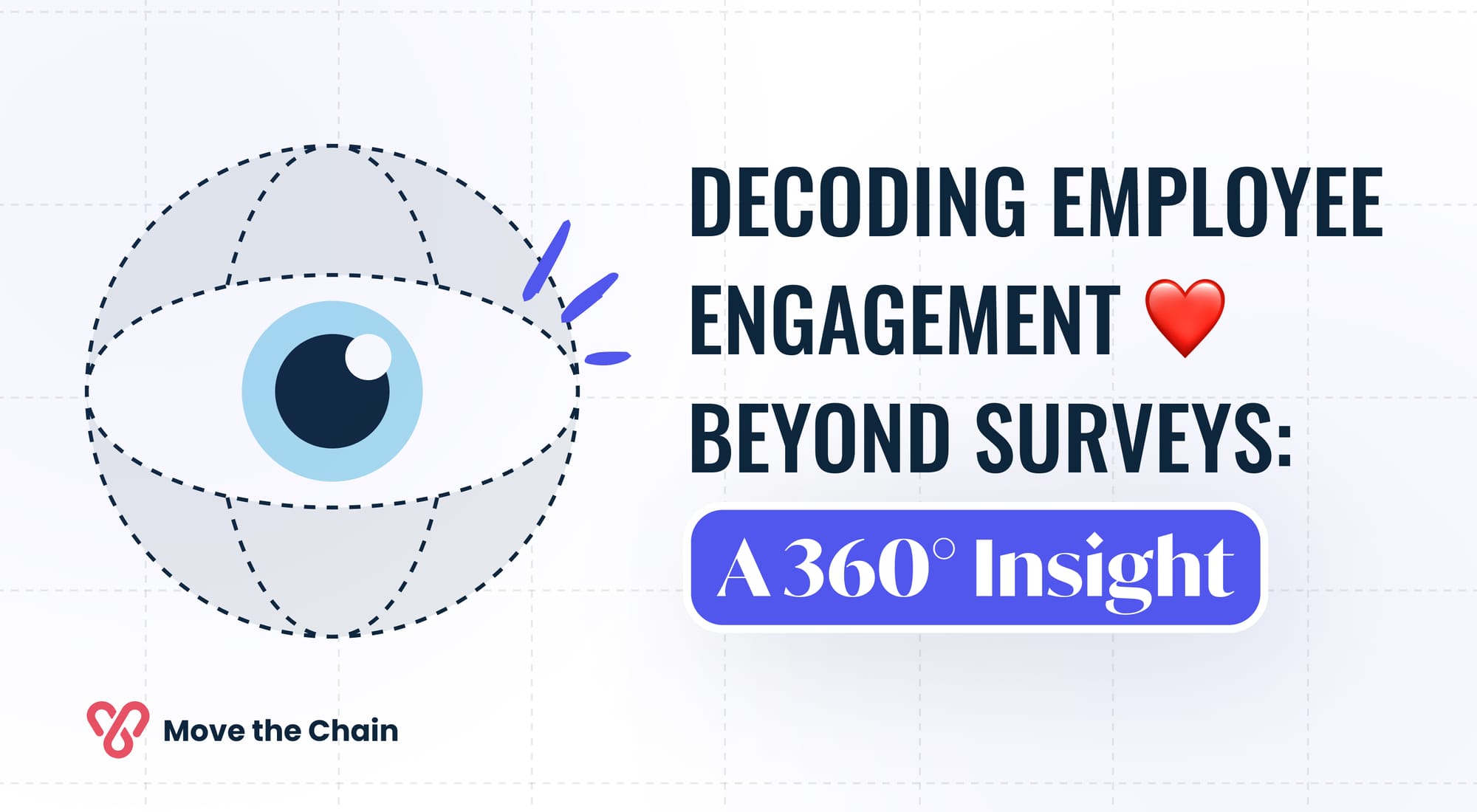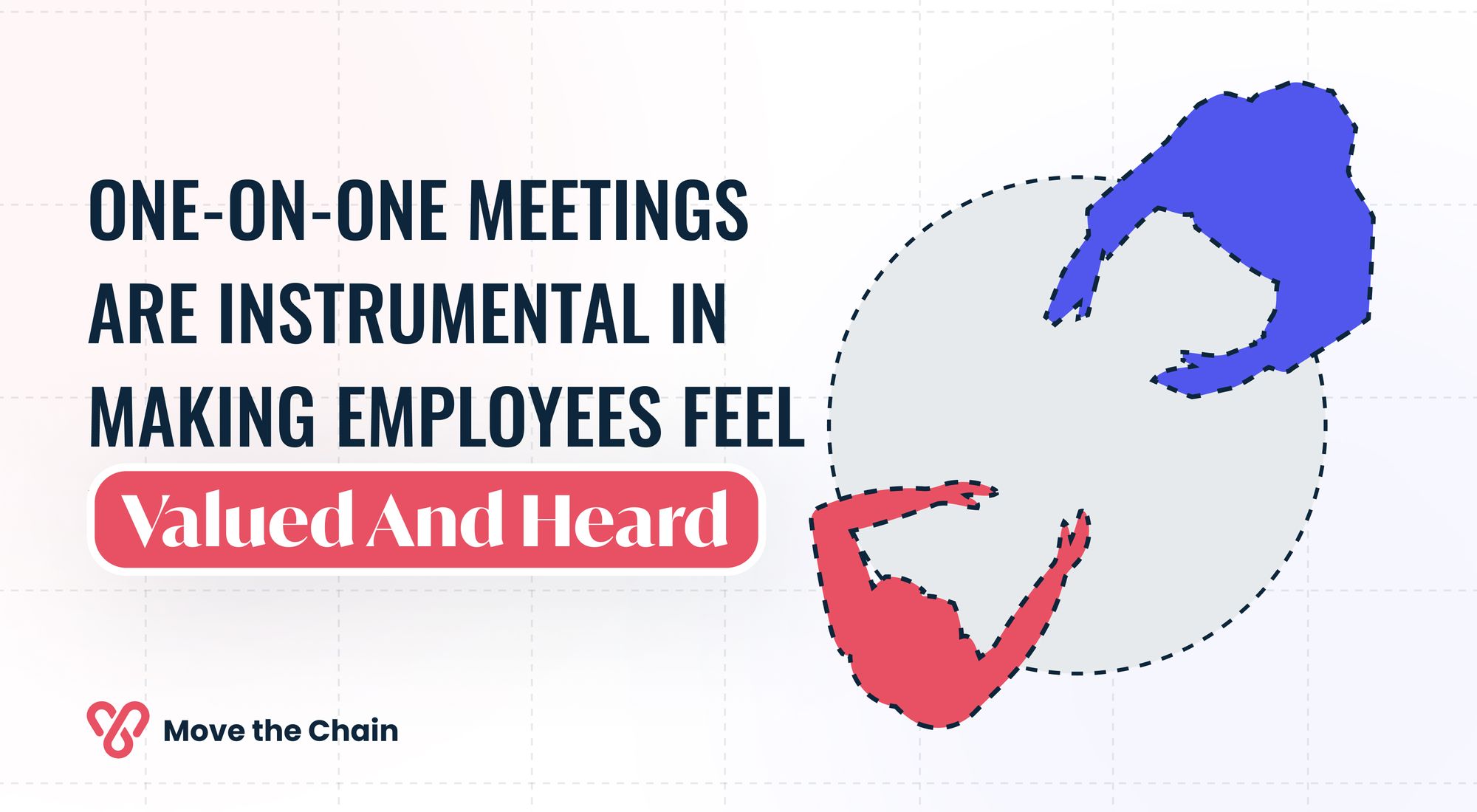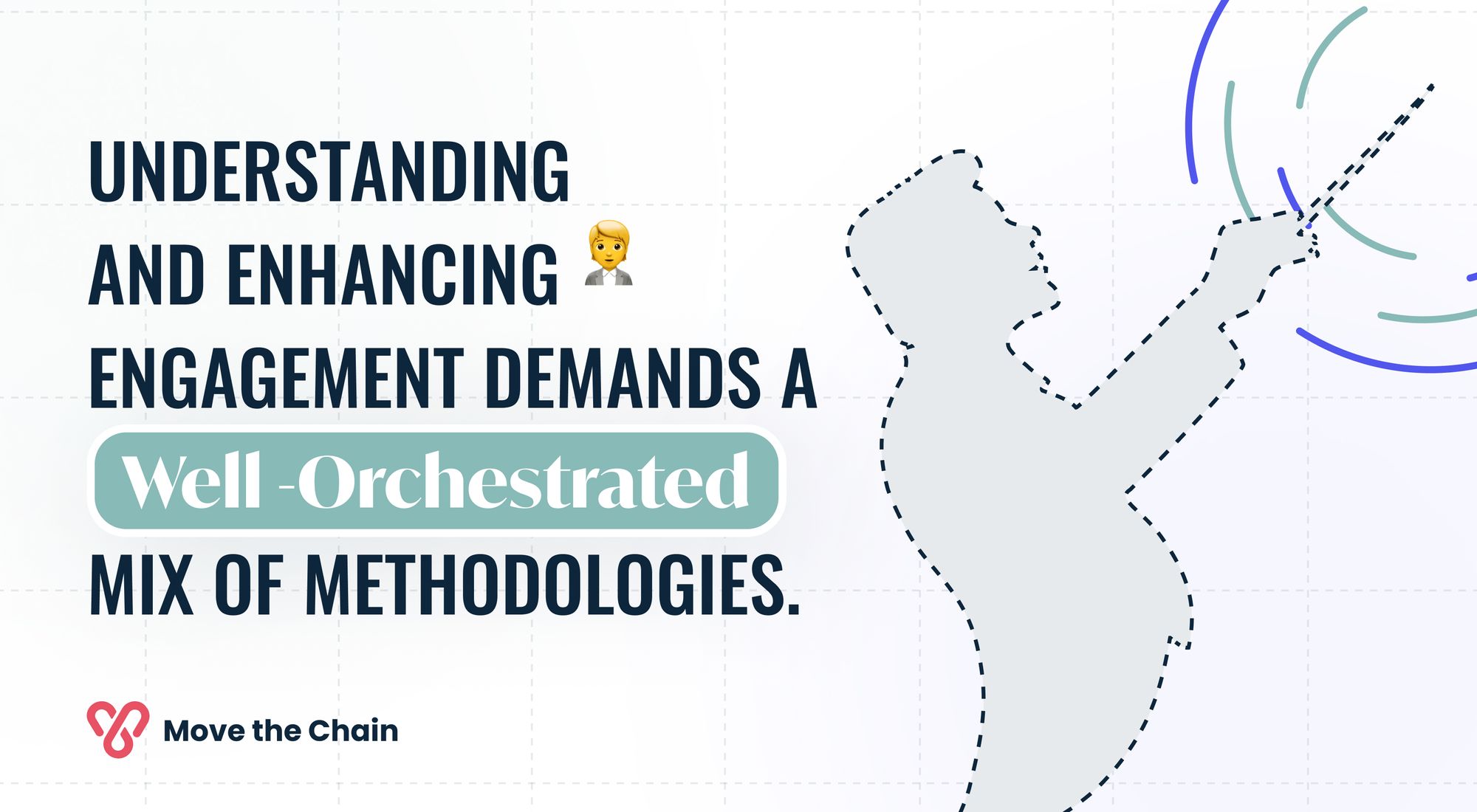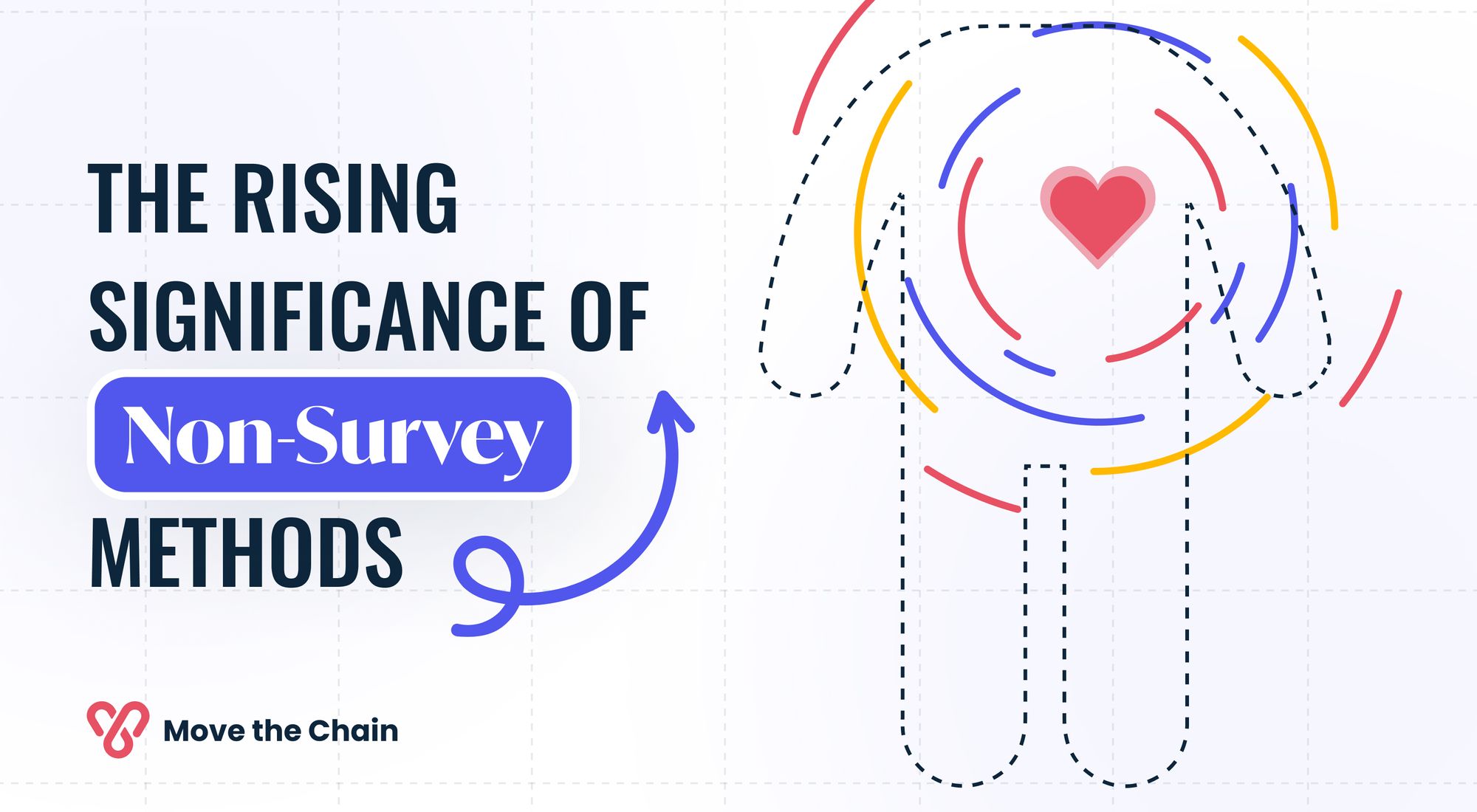Decoding Employee Engagement Beyond Surveys: A 360° Insight

In today's dynamic corporate world, the concept of employee engagement has taken center stage, becoming a pivotal aspect of human resources and organizational strategy. As businesses strive to foster a culture of engagement and enhance employee experience, the landscape of employee engagement has witnessed a significant evolution. From being a mere buzzword to becoming a critical determinant of business outcomes, employee engagement now stands as a testament to an organization's commitment to its workforce.
Historically, engagement surveys have been the cornerstone in understanding the pulse of the work environment. These annual surveys provided HR leaders with a snapshot, a numerical engagement score, reflecting the sentiments and attitudes of their employees.
While such pulse surveys have been instrumental in measuring engagement levels and identifying areas of improvement, they often presented a limited view. Many organizations relied heavily on these survey results to shape their engagement strategy, sometimes overlooking the nuances and individualized experiences that went beyond the survey data.
However, as the business world evolves, so does the need for a more holistic understanding of what keeps employees engaged. The realization that engaged employees are not just satisfied but are also imbued with a sense of purpose and meaning in their roles has prompted many companies to go beyond traditional employee engagement surveys. The quest now is to delve deeper, to understand the drivers of engagement, and to create a work and workplace where employees feel valued, heard, and motivated to contribute to high performance.
In this exploration, while annual engagement surveys remain a valuable tool, the emphasis is shifting towards a more comprehensive approach. An approach that not only gauges employee sentiment through numbers but also seeks to understand the stories, experiences, and aspirations that lie beneath.
As we embark on this journey, we'll delve into alternative methods that offer a panoramic view of employee engagement levels, transcending the traditional confines of survey data and embracing a 360° insight into the heart of employee value proposition.
Beyond Surveys: Unveiling the Odyssey

One-on-One Alchemy
In the realm of employee engagement, the magic of one-on-one interactions cannot be understated. These are intimate sessions where managers and employees come together, away from the hustle and bustle of daily duties, to engage in candid dialogues.
Definition and Importance:
One-on-one meetings are personalized sessions between a manager and an employee, designed to discuss work progress, address concerns, and chart out future goals. In the context of engagement, these meetings serve as a platform for employees to voice their opinions, share their aspirations, and receive feedback. They are instrumental in making employees feel valued and heard, fostering a culture of engagement within the organization.
Benefits and Challenges:
The primary benefit of one-on-one meetings is the depth of insight they provide into individual employee attitudes and needs. They allow for immediate feedback, fostering a sense of trust and open communication. Moreover, they play a pivotal role in improving employee engagement by addressing concerns before they escalate. However, the challenge lies in their time-intensive nature. Conducting meaningful one-on-ones requires dedication and can be challenging to scale across an entire organization.
Stay Interviews: A Prelude to Engagement
What are they and why are they crucial? Stay interviews are proactive discussions held with current employees to understand why they continue to work for the company.
Unlike exit interviews, which are retrospective, stay interviews focus on the present and future, aiming to identify and reinforce positive drivers of employee engagement. They are crucial because they offer real-time insights into what's working well and what needs improvement, allowing HR leaders to address potential engagement issues before they lead to disengagement or attrition.
Potential Pitfalls:
While stay interviews can be a goldmine of information, if not conducted with genuine intent and sensitivity, they might come across as a precursor to exit interviews, causing anxiety among employees. It's essential to frame these interviews positively, ensuring employees understand their purpose and value.
The Harbingers of Change
Significance of Turnover and Absenteeism Rates: Both voluntary turnover and absenteeism rates serve as critical indicators of employee engagement levels. A high turnover rate often signals dissatisfaction, while a rising absenteeism rate can indicate burnout or disengagement. These metrics act as the canaries in the coal mine, forewarning HR of potential engagement challenges.
Limitations in Predicting Engagement:
While these metrics are valuable, they often provide insights after the fact. By the time turnover or absenteeism rates spike, the underlying engagement issues might have been festering for a while, making proactive intervention challenging.
Natural Language Wizardry
Introduction to NLP in the Context of Employee Engagement: Natural Language Processing (NLP) is a branch of artificial intelligence that analyzes human language. In the sphere of employee engagement, NLP tools can decode the linguistic patterns in digital communications like emails and chat messages, offering real-time insights into employee sentiment and engagement drivers like morale and collaboration.
Advantages and Potential Shortcomings:
NLP provides a dynamic way to gauge engagement, sidestepping the traditional survey fatigue and offering insights as conversations unfold in real-time. It captures the organic employee opinion and feelings, making it a powerful engagement tool. However, its reliance on digital communication means it might miss out on non-verbal cues or the depth of face-to-face interactions. Additionally, while NLP can identify general trends, it may occasionally overlook the subtle nuances of human communication.

The Symphony of Synthesis
In the vast orchestra of employee engagement, each instrument, from the deep tones of traditional surveys to the vibrant notes of alternative methods, plays a pivotal role. Just as a symphony requires the harmonious blend of various instruments to create a captivating melody, understanding and enhancing engagement demands a well-orchestrated mix of methodologies.
The Harmonious Blend of Traditional Surveys and Alternative Methods
Traditional engagement surveys, with their structured approach and comprehensive reach, have long been the stalwarts of gauging employee sentiment. They provide a broad snapshot, capturing the collective voice of the workforce and offering a baseline engagement score. However, in the ever-evolving landscape of the corporate world, relying solely on these annual surveys can leave gaps in understanding.
Enter the alternative methods: the one-on-one alchemy, the foresight of stay interviews, the predictive power of turnover and absenteeism rates, and the real-time analytics of NLP. These methods, each with its unique strengths, add layers of depth and nuance to the engagement narrative. They capture the individual stories, the immediate reactions, and the subtle shifts in sentiment that might go unnoticed in broader surveys.
When these traditional and alternative methods come together, they create a rich tapestry of insights, offering a 360° insight into employee engagement levels. This blend ensures that while the broader trends are identified and addressed, the individual voices and unique experiences are not lost in the chorus.
The Importance of a Balanced Approach for a Holistic View:
In the quest to achieve high levels of employee engagement, it's essential to recognize that no single method holds all the answers. While pulse surveys might highlight areas of concern, one-on-one meetings can delve deeper into individual challenges. Similarly, while turnover rates might signal a broader issue, stay interviews can provide insights into preventive measures.
A balanced approach, therefore, is not just a recommendation but a necessity. It ensures that organizations capture both the breadth and depth of engagement, from the overarching trends to the individual experiences.
By harmonizing the comprehensive cadence of surveys with the detailed nuances revealed by non-survey methods, organizations can orchestrate a more profound understanding of engagement dynamics. This holistic view is the key to crafting effective engagement strategies that resonate with the entire organization, driving business results and fostering a culture of engagement.
In this symphonic journey of understanding and enhancing employee engagement, it's the harmony between the various methods that leads to the most captivating melodies. And as the music plays on, organizations that embrace this balanced approach will find themselves at the forefront, creating workplaces that truly resonate with engagement, innovation, and success.
Key Takeaways
A Concise Summary of Alternative Methods and Their Effectiveness:
1.One-on-One Meetings: Personalized sessions that allow managers to delve deep into individual employee experiences. While they offer rich insights and foster trust, they can be time-intensive and challenging to scale across larger organizations.
2.Stay Interviews: Proactive discussions that aim to understand why employees continue with the company. They provide real-time feedback and can prevent potential disengagement. However, they must be approached with care to avoid being misconstrued as exit interview precursors.
3.Turnover and Absenteeism Rates: These metrics act as early warning signs of potential engagement challenges. While they offer clear indicators of dissatisfaction or burnout, they often provide insights after the fact, limiting proactive interventions.
4.Natural Language Processing (NLP): A tech-driven approach that analyzes digital communications for engagement cues. NLP offers real-time insights and avoids survey fatigue. However, it may occasionally miss the depth and nuances of face-to-face interactions.

The Balance Between Survey and Non-Survey Methods
Surveys, with their structured approach, have been the traditional backbone of measuring employee engagement. They offer a broad view, capturing the collective sentiments of the workforce. However, in today's dynamic work environment, solely relying on annual engagement surveys can lead to gaps in understanding the ever-evolving landscape of employee sentiments.
Alternative methods, on the other hand, provide the depth, immediacy, and granularity often missing in broader surveys. They capture the individual stories, the immediate reactions, and the subtle shifts in sentiment, offering a more rounded view of engagement.
For a truly holistic understanding of employee engagement levels, organizations must strike a balance. While surveys provide the overarching narrative, non-survey methods fill in the details, ensuring a comprehensive picture. This balanced approach ensures that while macro trends are identified, micro-narratives are not lost in the shuffle.
In essence, to navigate the intricate realm of employee engagement, organizations must harness the strengths of both survey and non-survey methods, weaving them together to create a cohesive and insightful engagement tapestry.
Effectiveness of Non-Survey Methods
In the quest to understand the multifaceted nature of employee engagement, non-survey methods have emerged as valuable tools, offering unique perspectives and insights. Let's delve deeper into the effectiveness of these methods, examining their pros and cons.
One-on-One Meetings
Pros:
•Personal Touch: These meetings provide a platform for open dialogue, allowing employees to voice concerns, share aspirations, and receive feedback in a personalized setting.
•Immediate Feedback: Managers can address issues in real-time, fostering a sense of trust and open communication.
•Relationship Building: Regular one-on-ones help strengthen the bond between managers and employees, enhancing the overall employee experience.
Cons:
•Time-Intensive: Conducting meaningful one-on-ones requires dedication, making it challenging to implement consistently across larger organizations.
•Limited Scope: While they offer depth, one-on-ones might not provide a comprehensive, organization-wide view of engagement.
Stay Interviews
Pros:
•Proactive Approach: By focusing on the present and future, stay interviews can identify and address potential issues before they escalate.
•Real-Time Insights: They offer a snapshot of current employee sentiments, allowing HR leaders to make timely interventions.
Cons:
•Sensitive Nature: If not conducted with genuine intent and sensitivity, they might be misconstrued as exit interview precursors, causing anxiety among employees.
•Design Challenges: Crafting effective stay interviews requires careful framing to ensure they are seen as positive and constructive.
Turnover Rate
Pros:
•Clear Indicator: A high turnover rate is a straightforward metric signaling potential dissatisfaction or deeper engagement issues.
•Quantitative Measure: Easy to calculate and track over time, offering a tangible measure of engagement health.
Cons:
•Reactive Nature: By the time turnover rates spike, the underlying issues might have been present for a while, limiting proactive interventions.
•Missed Opportunities: Focuses on employees who have already left, overlooking those at risk of disengagement.
Absenteeism Rate
Pros:
•Tangible Data: Like turnover rates, absenteeism offers a clear, quantitative measure of engagement challenges.
•Early Warning: Rising absenteeism can signal burnout, dissatisfaction, or other engagement issues.
Cons:
•After-the-Fact: Often provides insights after disengagement has set in.
•Multiple Causes: Absenteeism can result from various factors, not just disengagement, requiring deeper analysis to discern the true reasons.
Natural Language Processing (NLP)
Pros:
•Real-Time Analysis: NLP tools can analyze digital communications as they happen, offering immediate insights.
•Broad Scope: By analyzing vast amounts of data, NLP can identify overarching trends and patterns related to engagement.
•Avoids Survey Fatigue: Provides a continuous stream of insights without relying on periodic survey responses.
Cons:
•Nuance Challenges: While powerful, NLP might miss the subtleties of human communication or the depth of face-to-face interactions.
•Privacy Concerns: Analyzing personal communications can raise privacy issues, requiring clear guidelines and transparency.
In conclusion, while non-survey methods offer valuable insights into employee engagement, each comes with its set of strengths and challenges. By understanding these nuances, organizations can effectively harness these tools, complementing traditional surveys to achieve a comprehensive view of engagement dynamics.
Conclusion
As we navigate the intricate tapestry of employee engagement, it becomes evident that understanding and enhancing engagement is not a one-size-fits-all endeavor. The journey requires a blend of traditional wisdom and innovative approaches, each offering its unique perspective and insights.
The Enduring Importance of Surveys:
Surveys have long stood as the bedrock of gauging employee sentiment. Their structured approach, ability to capture the collective voice of the workforce, and provision of quantifiable metrics make them an invaluable tool in the HR arsenal. Surveys, especially when thoughtfully designed, offer a broad snapshot, capturing overarching trends, and providing a baseline from which to measure progress. Their comprehensive nature ensures that organizations can identify areas of strength and concern, shaping their engagement strategy based on tangible data.

The Rising Significance of Non-Survey Methods:
While surveys offer breadth, non-survey methods provide depth. In today's dynamic work environment, where employee needs and aspirations are continually evolving, these alternative methods have emerged as vital tools. Whether it's the personal touch of one-on-one meetings, the proactive insights from stay interviews, or the real-time analytics of Natural Language Processing, non-survey methods capture the nuances, stories, and individual experiences that might go unnoticed in broader surveys. They reflect the changing landscape of the corporate world, where immediacy, personalization, and adaptability are paramount.
The Recommendation for a Combined Approach for Comprehensive Insights:
In the quest for a holistic understanding of employee engagement, neither surveys nor non-survey methods can stand alone. Each has its strengths and limitations. While surveys provide a macro view, non-survey methods fill in the micro details. To truly grasp the multifaceted nature of engagement, organizations must weave these methods together, creating a cohesive and comprehensive engagement narrative.
Embracing a combined approach ensures that while the broader narratives are captured, the individual voices are not lost in the crowd. It allows organizations to be both proactive and reactive, addressing immediate concerns while also strategizing for the long term. This harmonious blend is the key to crafting engagement strategies that resonate with the entire organization, driving business results, fostering a culture of engagement, and ensuring enduring success.
In the grand symphony of employee engagement, it's the harmony between various methods that creates the most captivating melodies. As we look to the future, may our endeavors in understanding and enhancing engagement continue to evolve, reflecting the